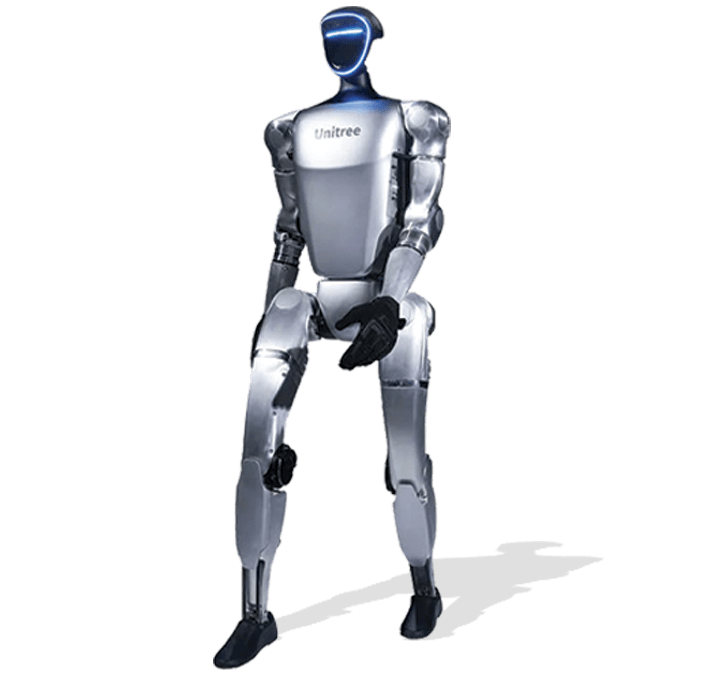By Scott Simmie
Did you catch the recent news?
A few cool things have popped up on the humanoid front. The first is that Hyundai Motor Group – which owns a majority share in Boston Dynamics – announced it will purchase “tens of thousands” of robots for use in its factories in coming years. It’s part of a $21B US investment in United States operations, which includes $6B “to drive innovation and expand strategic partnerships with U.S. companies” according to this news release.
Hyundai has already deployed the Boston Dynamics quadruped Spot at some facilities, but the release makes it appear that the future is humanoid.
“Physical AI and humanoid robots will transform our business landscape to the next level. Through our collaboration, we will expedite the process to achieve leadership in the robotics industry,” said Jaehoon Chang, Vice Chair of Hyundai Motor Group.
The other news of note? Both Boston Dynamics and Agility Robotics (the makers of humanoid Digit) will join A3 (the Association for Advancing Automation) to develop a new safety standard for robots in the workplace. It’s said that the recent advances in humanoid robots were a key catalyst for the project.
How widespread will the adoption of humanoids be? Well, recent analysis by Morgan Stanley predicts eight million units will be on the job by 2040, and 63 million by 2050. Think about that for a minute.
Below: Atlas in a factory setting trial. Note the mistake – followed by an AI-driven correction
WHY HUMANOIDS?
There are plenty of robots on the market with a variety of form factors. There are wheeled AMRs, quadrupeds, fixed robotic arms – and more. So what is it about humanoids that differentiates them?
“Humanoid robots assume a human-like form factor,” explains InDro’s Head of R&D Sales Luke Corbeth. “It means it has bipedal or two-legged locomotion. They also tend to include dexterous hands – the ability to pick and place objects. They also ideally have some kind of autonomous functionality and the ability to interact with the environment in smart ways.”
Because of their bipedal form factor, humanoids tend to remind us of human beings (which is obviously how they get their name). Nearly all humanoids currently on the market are about the size of a human – and there’s a reason for that: Workplaces are largely built for people.
“What makes the humanoid form factor really exciting is, unlike traditional robots, the infrastructure doesn’t need to change to accommodate it. As a result, it can adapt to navigating different environments using existing equipment. This means we don’t need to retrofit factories, offices, and homes. So there’s much faster deployment for companies looking to adopt this technology,” he adds.
HANG ON A SECOND
You’ve no doubt seen videos by now of humanoids carrying out tasks. Often, these videos have been sped up. Humanoids, with rare exceptions, don’t yet move at the speed of human beings – and often have to pause to understand and perceive their environment.
But does that matter?
“The answer is kind of no,” says Corbeth. “In a lot of cases, humanoids can work around the clock. So if they’re slightly slower than humans are today, their overall productivity can still be higher. Plus, we’re still in the early phases of humanoids, so we do expect their speed and dexterity to continue improving over time.”
That being said, you can’t simply drop a humanoid into a factory setting and expect it to carry out work – at least not yet. Like a human employee, robots need training – often via remote teleoperation, coding, and additional autonomy stacks before they’re capable of punching the clock.
At InDro, we’re a North American distributor for Unitree, a leading global robotics manufacturer. In addition to its G1 and H1 (and H1-2) humanoid robots, the company has put considerable resources into its Dex5 dexterous hand. You’ll see in the video below it’s getting close to human-like capabilities – and that the G1 has impressive speed and agility even on challenging terrain.
INDRO’S TAKE
It’s still early days. But we’re excited about the potential for humanoids in an Industry 4.0 setting – and have some plans on this front.
“As an R&D company, we know that integrating any robot into a real-world setting takes work,” says Indro Robotics Founder/CEO Philip Reece. “With products like InDro Controller and our InDro Autonomy software stack – plus another innovation we’ll be releasing later this year – we have the ability to significantly enhance stock humanoids and dial them in for specific work settings. Humanoids are here to stay.”
Interested in learning more? Get in touch with us here.

